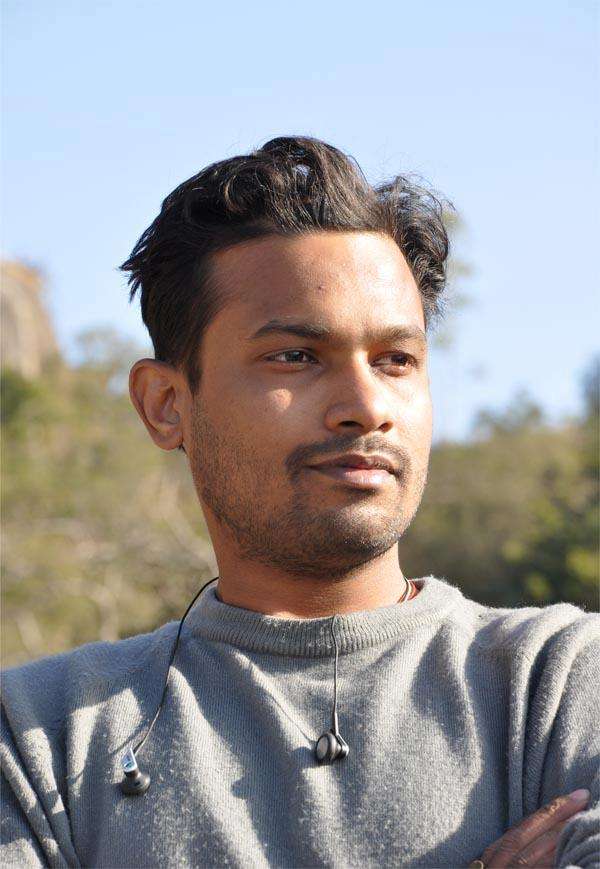
Produced in the globally influenced, culturally diverse and technological advanced times of the 21st century, contemporary art paintings are diverse and eclectic in every sense. Challenging the established boundaries of the past, the artworks of this genre lack any uniformity or principle instead are imbued with dynamic concepts, methods, themes, materials and subjects. Unquestionably, these works are in great demand among art lovers and a must found in almost every online art gallery and studios.
Here we have compiled the legacy of some famous contemporary artists who have revolutionized the art scene:
-
100 Years Ago by Peter Doig
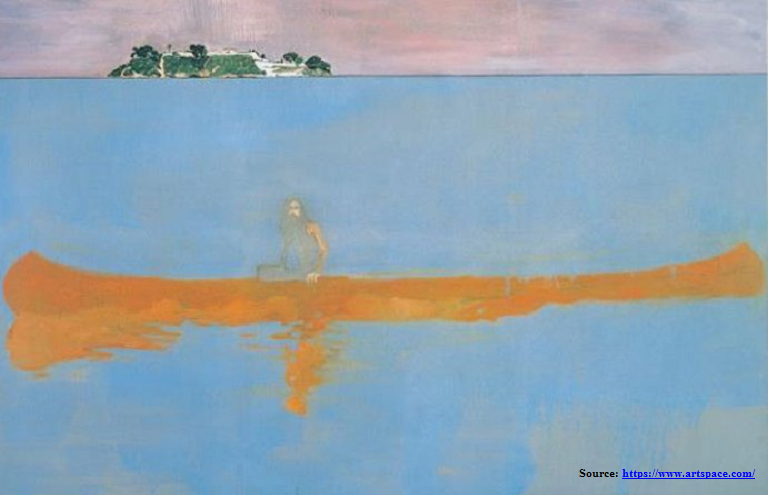
This contemporary artwork by renowned figurative painter Peter Doig has a strong tendency to disorient us. Amidst an impossibly still sea and a vivid pink sky, the painting depicts a ghostly figure — a bearded man with long hair sitting in a canoe, who is staring towards us. The eerie composition and the spectral feeling is accentuated by Doig’s brilliant use of colors, with some areas comprising thin washes of paint while at others left to run down the canvas.
The image of the canoe is not a new motif in Doig’s paintings, having associations with childhood memories in Canada, it is a recurring element in his artworks. However, other elements were drawn from different sources, such as the imagery is derived from the cover album Duane Allman, 1972 : An Anthology, which featured a photograph with the band’s bassist sitting in a canoe and the background is sourced from a separate photograph featuring the prison island off the coast of Trinidad, Carrera where Doig lived for a short span of time.
-
Dispersion by Julie Mehretu
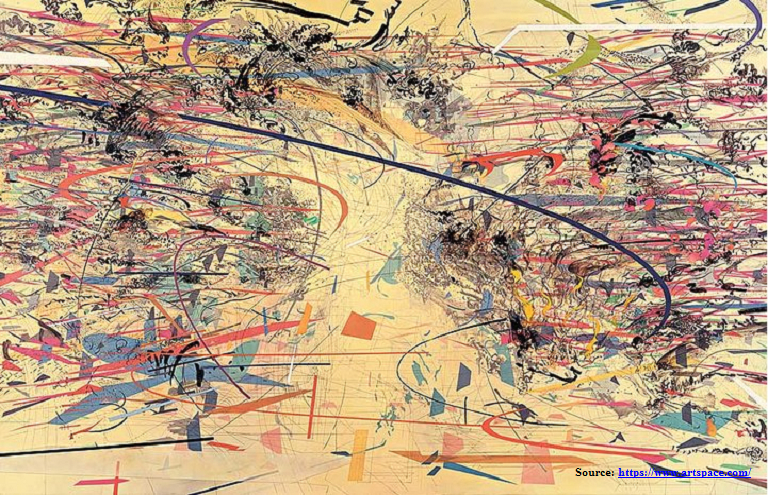
The contemporary art painting ‘Dispersion’ by Julie Mehretu is a densely layered kaleidoscopic mass of color that seems to explode across the canvas surface. With an underlying elaborate linear structure in place, these calligraphic swooshes and monochromatic geometric forms featured in the painting appear to whirl around as if caught in a mysterious and powerful vortex. These colorful abstract marks, forms and shapes featured in her works are not just mere application of paint but more of a personal signifier, or visual language which help the characters of complex Post-Modern landscapes to express themselves freely.
Born in Ethiopia, Mehretu completed her education from Senegal and the USA. Delving into the formal investigations of color and line, her paintings also deal with social issues concerning power, history and the establishment of personal and cultural identity in a world deeply influenced by globalization. The integration of pre-existing architectural plans and designs in her works often make her paintings imply extraordinary new maps representing both space and time.
-
Event by Brice Marden
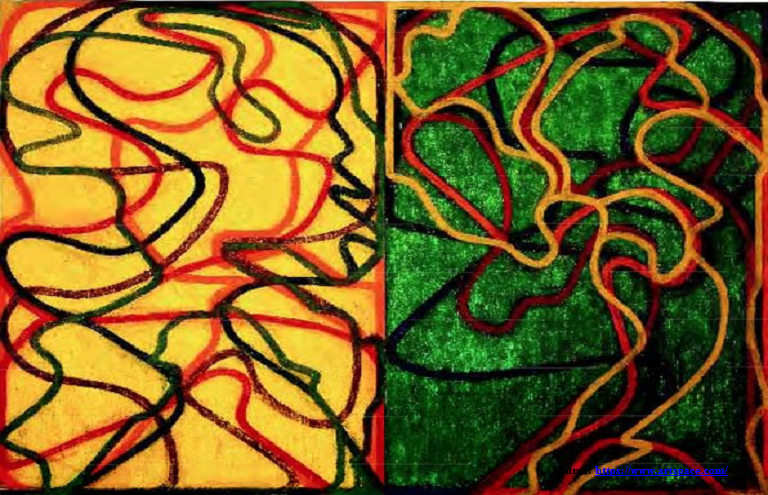
This 21st century contemporary art painting by Brice Marden depicts colorful serpentine lines moving rhythmically across the canvas pushing against the edges of the rectangular panels. What makes this piece extraordinary is though overlapping how each color occupies a defined and distinct plane within the shallow canvas space and do not entwine with each other so as to look muddled.
One of the most popular abstract painters of his time, it were the minimalist monochrome paintings of Marden that helped him gain recognition in the 1960 and are a part of some important public collections, with its prints available on several online art galleries. Later in the mid-1980s, taking inspiration from the Chinese and Japanese calligraphy, he introduced linear motifs into his work. Preferring to paint at a distance from the canvas, he used a long brush and gradually developed a set of compositional and formal artistic rules that he self-imposed for each of the series of works that followed wherein each painting became a subtle variation of a pre-decided theme. The slow, well-thought processes that shape Marden’s paintings also encourage a contemplative approach on the part of the viewer.
-
Krankenhaus (Hospital) by Maria Lassnig
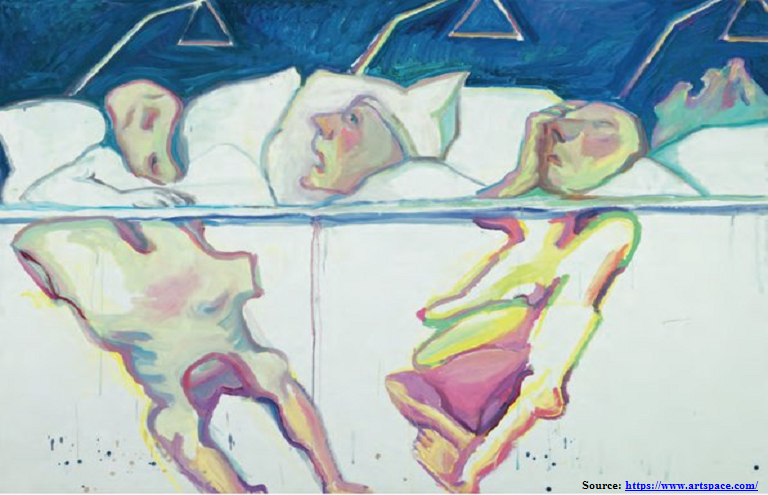
Krankenhaus (Hospital) was painted by Maria Lassnig in her eighties. Comprising a composition split horizontally, the top half of this contemporary art painting depicts three heads resting on pillows which appear fearful and deeply pained — the one on the extreme left is reminiscent of Edvard Munch’s imagery The Scream (1893). The bottom half is painted as an X-ray revealing what lies under the bedclothes — two grotesque, limbless and highly deformed bodies with deep gaping wounds. Undoubtedly a powerful depiction of the wretched reality of debility, and incapacity in old age, this painting brilliantly represents the patients’ misery, helplessness as they lie under the institutional lights. Many of her later works depict the ageing body and her frustration at the physical limitations imposed by age.
Though she came to prominence only in her sixties, Maria Lassnig (1919–2014) was a celebrated figurative painter. Known for coining the term "body-awareness painting" to describe her intention to paint not an external interpretation of physical feelings but their perception that lies within. The epiphany came to her in the studio while working on a self-portrait with her body pressed against the chair, she realized that a true representation of that feeling should focus on that sensation rather than the soft flesh.
-
The Blindfolded Man by Marlene Dumas
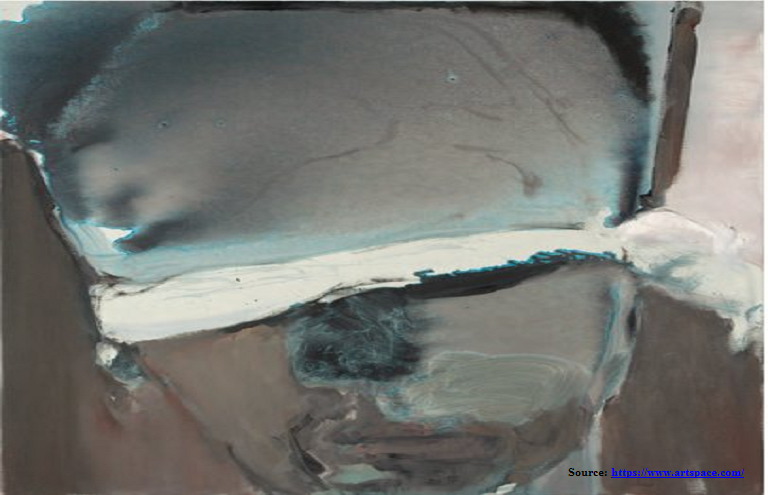
A contemporary South African artist, Marlene Dumas was born in Cape Town in 1953, she usually paints portraits of figures, these figurative paintings often focusing on the head or face have earned a prominent place among the most influential artists of her generation. Though she mostly takes her subjects from politics, news reports and popular culture, and often draws inspiration from photographs in newspapers or magazines, she also creates self-portraits and paints her family, particularly her daughter. However, the themes depicted in her work are always harrowing or difficult such as ‘The Blindfolded Man’. Belonging to the series of paintings portraying victims annihilated by torture, this painting depicts the face of a victim blindfolded with his features minimally expressed. The use of muted colors further adds a tone of melancholy to the work. She has also created many images of human dead bodies, including children. Her portrait, titled ‘Dead Marilyn’ painted in 2008 represents Marilyn as blemished, bloated, blotchy unlike her flawless glowing skin which made her virtually unrecognizable, inspired by an autopsy photograph of the actress.
-
Uphe by Tomma Abts
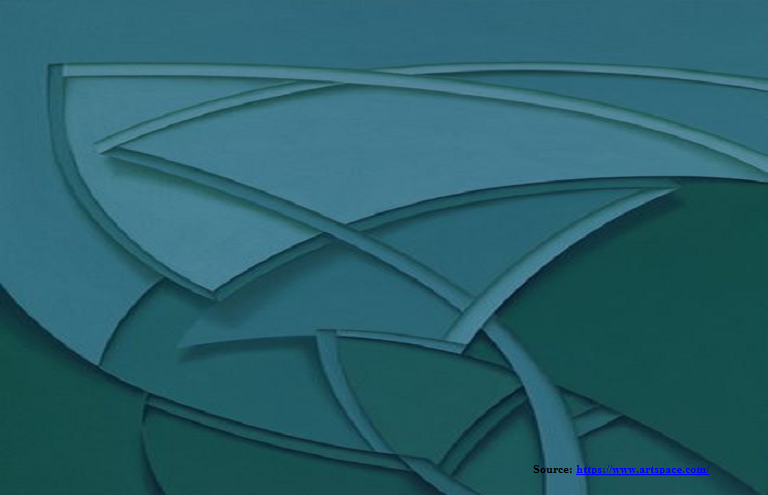
Like all of Tomma Abts’s work, this contemporary painting is also determinedly non-representational. With sculptural shapes floating on soft planes of teal blue and green, their impossibly interlocking structures silhouetted by shadow and highlights makes it look surreal. Though these strict geometries do not symbolize or describe anything, it is an exploration of color and space, where their subtle shifts create unexpected and mesmerizing effects of movement, stillness, depth.
Read More: Top Four Art Styles in Indian Contemporary Art Paintings
Born in Germany, Abts creates usually smaller canvases of the same size, using a laborious technique which involves laying down thin layers of paint again and again as directed by her intuition, she sometimes repeats the technique for months.
-
The Hinterland by Glenn Brown
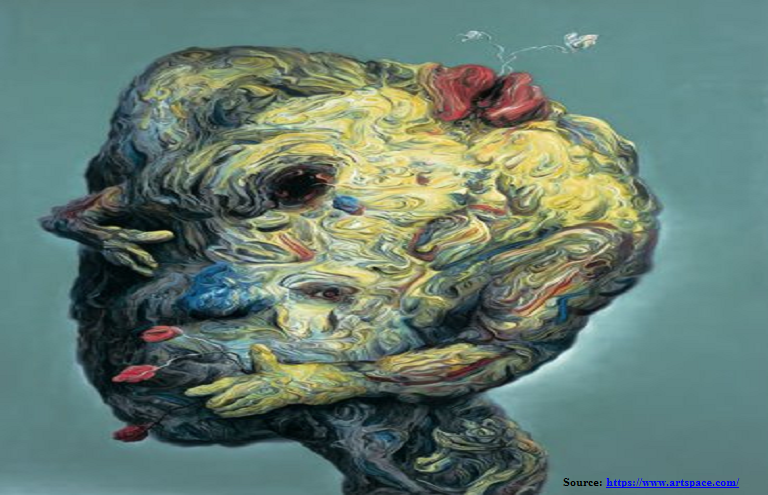
From afar ‘The Hinterland’ appears to depict a bizarre creature but if looked closely, even more grotesque being pops out, from which arms and hands emerge out with an embedded eyeball staring at us. The flesh of the creature appears to be developed from subsequent lashings of thick, and viscous oils, however, the surface is completely flat and plane. Each accumulation of paint and the striking gestural stroke has been created meticulously using small paint brushes, carefully laying subsequent layers of thin paint.
Taking imagery from art history and other popular culture, he creates his own twisted versions of other artist’s paintings. Though he continues to borrow from the art of the past, it lacks any obvious references of the old practices. Instead, he merges numerous fragments from unidentified artworks to develop a monstrous, mutant creature out of his own imagination. The result is a complex image hovering between abstraction and figuration.
Recommended: Decoding Contemporary Art and its Voyage
Wrap Up
Rejecting the practices of the past, each of these contemporary artists has created works that clearly highlight their freedom of not only to paint but also to express their thoughts and ideas in their own distinctive style. Undoubtedly, these artworks add meaning and life to the genre.
Don’t forget to share your favorite contemporary painting in the comments section below!













